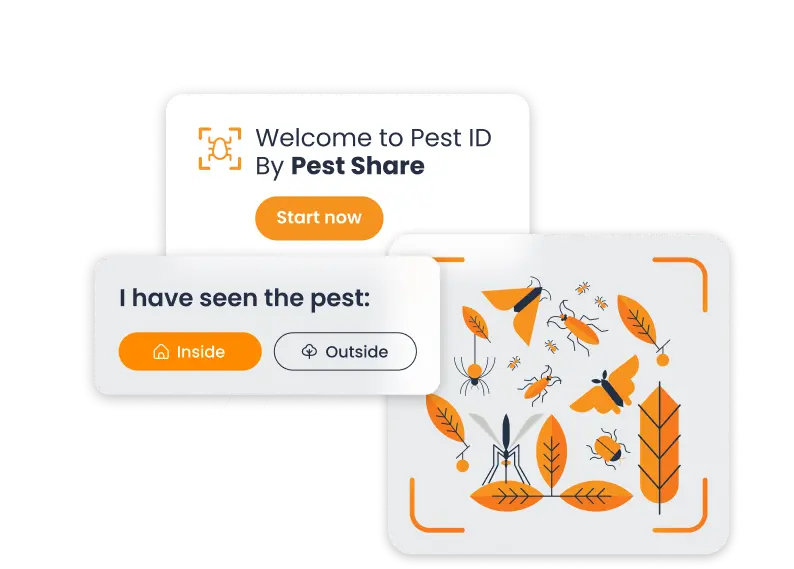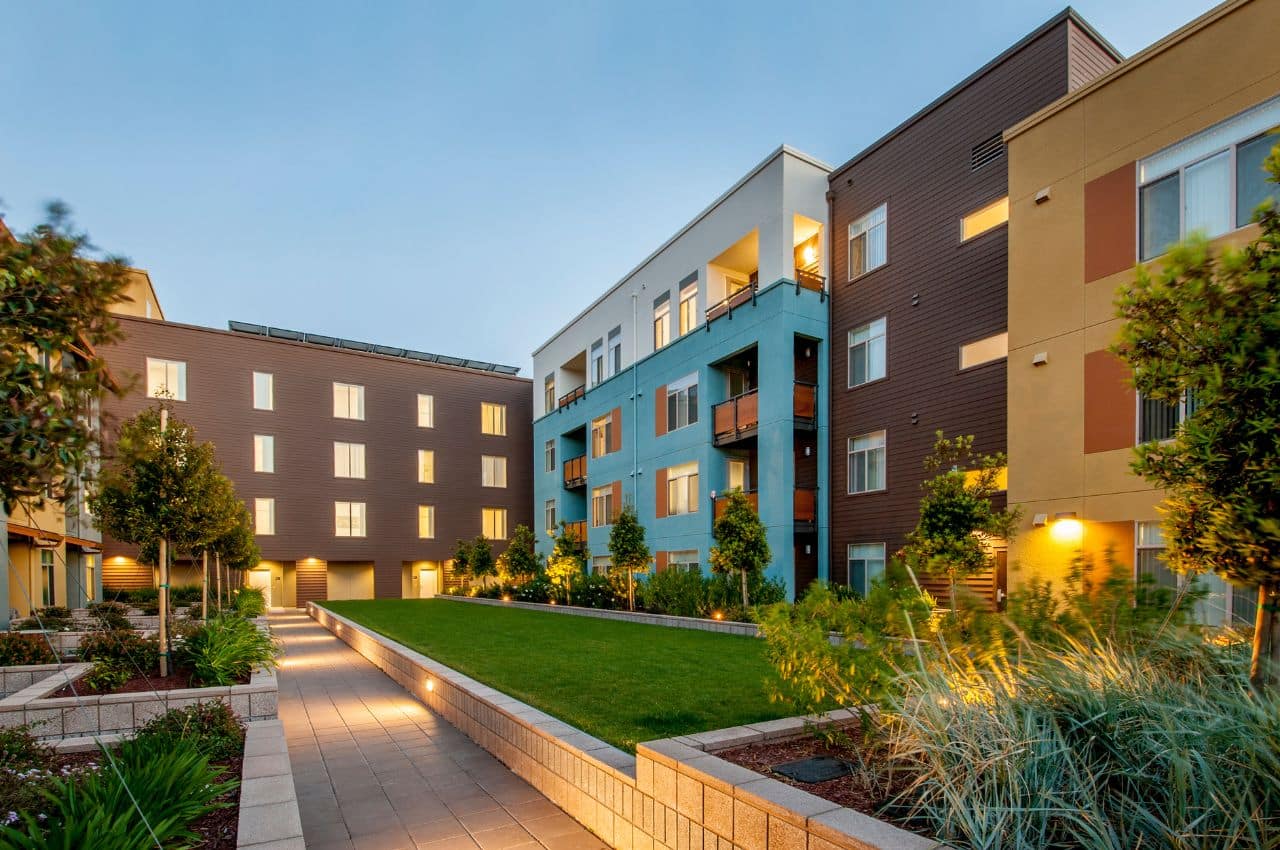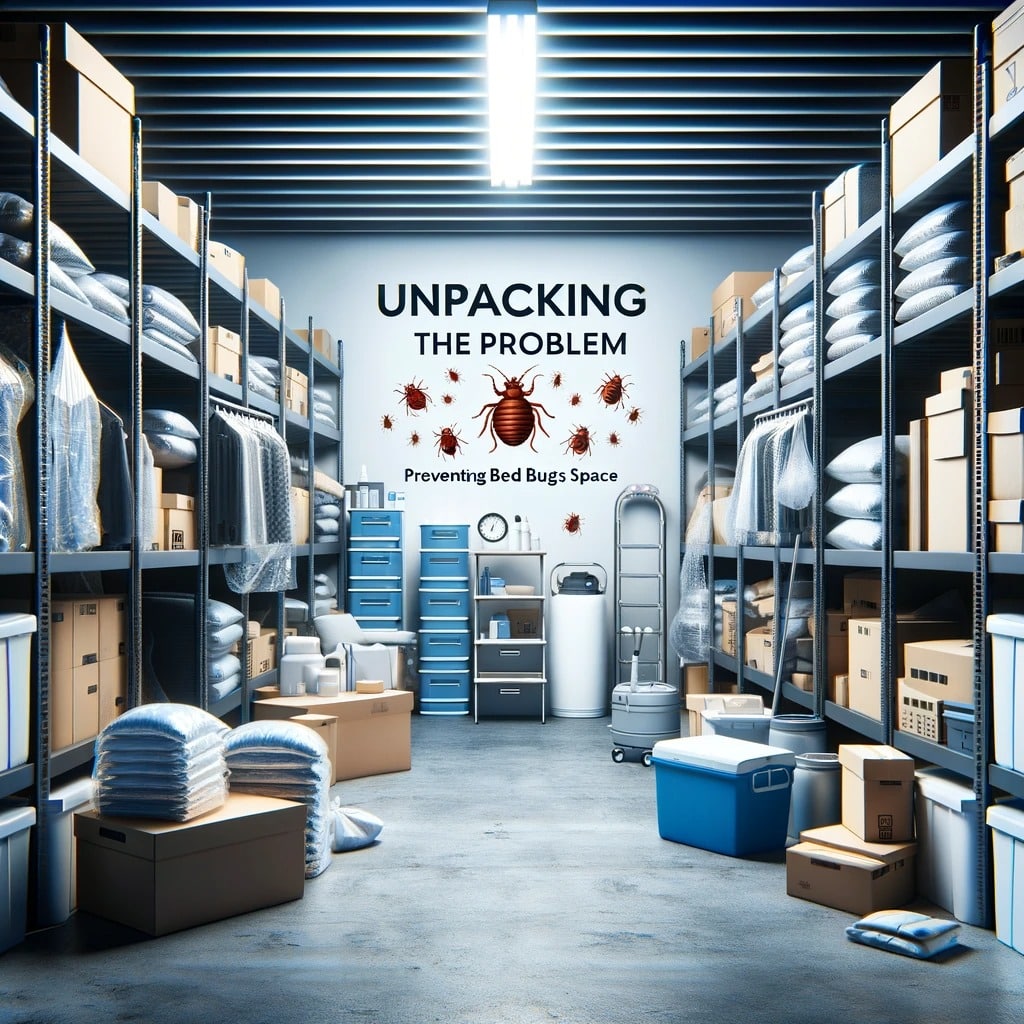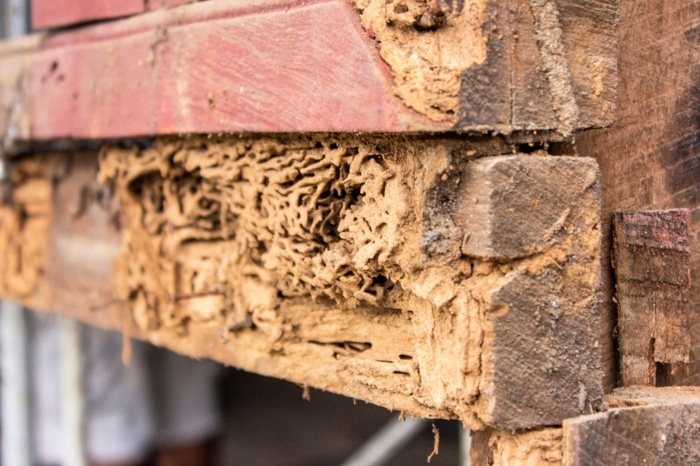Pest control in apartment complexes is not just a nuisance; it’s a serious business concern that can impact everything from tenant satisfaction to the bottom line. But don’t let the word “pest” make you flinch; this subject is far more exciting and crucial than you might imagine.
Don’t let pests take over your home! Act now and schedule a professional pest control service to get rid of unwanted guests.

Modern Pest Control, Simplified.
The Importance of Pest Control in Apartment Complexes
The symbiotic relationship between property managers and tenants often hinges on providing a safe, comfortable living environment. That’s where pest control comes in.
Think about it: A pest-free apartment isn’t just an attractive selling point; it’s a basic expectation.
A single infestation can quickly spiral into a full-blown crisis, affecting multiple units, tarnishing reputations, and even leading to legal troubles. So yes, the stakes are high, and the consequences of failure are real.
Target Audience and Scope of the Guide
You, the property manager, are on the frontline of this battle against the tiny invaders. Whether you’re seasoned in the art of pest control or just getting started, this guide is designed to arm you with knowledge, strategies, and insights tailored specifically for the world of apartment management.
No more scratching your head over legal jargon or pest biology. We’re diving straight into what matters most for your daily operations.
Overview of Common Pests in Apartment Settings
Let’s set the stage by introducing the usual suspects. We’re talking about roaches, bed bugs, rodents, and the like. These uninvited guests can find their way into the most exclusive apartment communities, and when they do, they’re notoriously difficult to evict.
But why should you care about the types of pests? Understanding your enemy is the first step towards victory. Recognizing the signs of an infestation, knowing what attracts them, and identifying their hiding spots will give you the upper hand.
Now that we’ve laid the groundwork, let’s explore the legal landscape, shall we?
Pest control apartment laws: Navigating the Maze
Federal Regulations on Pest Control
The Federal Insecticide, Fungicide, and Rodenticide Act (FIFRA) oversees the use and regulation of pest control products. It ensures that they meet safety standards, are labeled correctly, and are applied as intended.
While FIFRA doesn’t directly tell you how to handle pest control in your properties, compliance with this act means using registered products and following their instructions to the letter. No cutting corners here.
State and Local Laws and Compliance
Here’s where things get tricky. Each state may have its own set of laws and regulations governing pest control, and local ordinances might add another layer of complexity.
Some states require landlords to maintain pest-free environments, while others leave room for interpretation. The critical point is to know your specific state and local laws, because trust us, ignorance won’t be an acceptable defense in court.
Understanding Lease Clauses Related to Pest Control
Lease agreements are more than just legal documents; they’re your primary tool for setting expectations and defining responsibilities.
Consider a well-crafted lease clause as your best ally. It spells out who’s responsible for what, and when, and how. But remember, this isn’t a one-size-fits-all scenario. Tailoring lease agreements to fit local laws and your property’s unique situation is the way to go.
Case Studies: Legal Disputes and Lessons Learned
Real-life examples provide invaluable lessons. They shed light on the various challenges and pitfalls property managers may encounter. Whether it’s a tenant suing a landlord over a bed bug infestation or a landlord taking legal action against a negligent tenant, each case can be a treasure trove of insights.
In the realm of property management, understanding pest control isn’t just about killing bugs; it’s about enhancing the resident experience, protecting investments, and abiding by the law. So buckle up, because this guide isn’t just about keeping creepy crawlies at bay; it’s about elevating your game in the highly competitive world of property management.
Preventive Measures and Best Practices: A Stitch in Time
The old adage, “An ounce of prevention is worth a pound of cure,” rings true when it comes to apartment pest control. Proactive measures aren’t just smart; they’re essential. Let’s dig into what you can do before the pests even make themselves at home.
Regular Inspections and Timelines
Scheduled, systematic inspections are your eyes on the ground. They can reveal early signs of infestation, allowing you to nip the problem in the bud. You’re not just looking for pests here, but potential entry points, water leaks, or improperly stored food.
Crafting a well-structured timeline for inspections, perhaps seasonal or even monthly, can keep everything in check. It’s like a routine health check-up but for your property.
Tenant Education and Communication
Your tenants are the first line of defense, so turn them into allies. Educating them about proper sanitation, waste disposal, and food storage is not just passing the buck; it’s creating a united front against pests.
Regular communication through newsletters, emails, or social media with tips and reminders can make a world of difference. After all, a knowledgeable tenant is a powerful asset.
Building Design and Maintenance to Prevent Infestation
Did you know that the very design and upkeep of your building can ward off pests? Sealing cracks, proper ventilation, and regular maintenance of common areas are more than just aesthetic or functional choices; they’re strategic pest control measures.
Work closely with your maintenance teams, and don’t be afraid to invest in some preventive construction modifications. It’s like building a fortress against the invasion.
Selection and Usage of Pest Control Products
Not all pest control products are created equal. Selecting the right ones means understanding the specific pests you’re dealing with and the safest, most effective ways to combat them.
Be wary of the temptation to go for the most potent stuff right off the shelf. Think about the environment, the safety of your tenants, and long-term effectiveness.
Eco-friendly Pest Control Options
Going green is more than a trend; it’s a responsible choice. Integrating environmentally friendly pest control methods not only aligns with increasing environmental regulations but also caters to a growing demand among eco-conscious tenants.
From using non-toxic products to employing natural predators like ladybugs to tackle aphids, the options are surprisingly diverse and effective.
Identifying and Handling Infestations: When the Unwanted Guests Arrive
Despite all your preventive measures, pests may still find a way in. When they do, knowing how to respond is key.

Signs and Symptoms of Common Infestations
It’s detective time!
Recognizing early signs of infestation like droppings, nests, or even unusual odors can be your early warning system. Equipping your maintenance staff with this knowledge is like adding a layer of intelligence to your operations.
Immediate Steps for Property Managers
When an infestation is detected, time is of the essence. Having a step-by-step action plan, from confirming the infestation to notifying tenants and initiating treatment, ensures that you’re not scrambling in a crisis.
This is not the time for trial and error. It’s the time for decisive, well-informed action.
Collaborating with Pest Control Professionals
Sometimes, DIY just won’t cut it. Building strong relationships with professional pest control companies ensures that expert help is just a phone call away.
Selecting the right professionals, understanding their methodologies, and communicating your specific needs can turn a potential disaster into a well-handled situation.
Managing Tenant Expectations and Communications
Keeping tenants informed without causing unnecessary panic is a delicate balancing act. Crafting well-worded communications that explain the situation, the steps being taken, and what tenants can do to help foster trust and cooperation.
Remember, it’s not just about handling the pests; it’s about managing human emotions and expectations.
Follow-up Procedures and Long-term Strategies
The battle may be won, but the war is far from over. Post-treatment follow-ups and ongoing monitoring ensure that the problem doesn’t reoccur.
Implementing long-term strategies and adjustments to your prevention plans based on lessons learned adds a dynamic, adaptive edge to your pest control approach.
Pest Control and Tenant Relationships: Bridging the Human Gap
Tenant satisfaction isn’t just about luxurious amenities; it’s about feeling safe, respected, and cared for. That’s why your approach to pest control can make or break these vital relationships.
Clarifying Responsibilities (Landlord vs. Tenant)
Clear, transparent documentation that spells out who is responsible for what eliminates confusion and potential conflict. You’re setting the stage for a harmonious relationship right from the get-go.
Communication Strategies and Templates
Don’t underestimate the power of clear, consistent communication. Whether it’s a pest prevention tip or an update on an ongoing treatment, keeping tenants in the loop fosters a sense of community and trust.
Having templates for different scenarios at your fingertips ensures that communication is never an afterthought.
Feedback Mechanisms and Continuous Improvement
What do your tenants really think about your pest control efforts? Gathering feedback through surveys or informal conversations provides insights that you might not see from your perspective.
Embracing a culture of continuous improvement turns feedback into action, enhancing both your pest control strategies and your reputation among tenants.
Building a Community Around Common Goals
Last but not least, why not turn pest prevention into a shared mission? Engaging tenants through workshops, community events, or even competitions creates a sense of unity and shared responsibility.
After all, a community that fights pests together stays together.
By intertwining legal aspects, preventive measures, infestation handling, and tenant relationships, we’ve taken a holistic view of apartment pest control. It’s not just about bugs and laws; it’s about building a thriving community, nurturing relationships, and creating a pest-free sanctuary where everyone feels at home. And that, dear property manager, is what turns a good property into a great one.
Legal Considerations and Compliance: Navigating the Complex Landscape
Understanding legal obligations is vital to any property manager’s success, particularly in the realm of pest control.
Understanding Local and State Regulations
Different states, even different cities, can have unique regulations. Researching and complying with these rules isn’t just about avoiding fines; it’s about doing right by your tenants and your community.
Crafting Compliant Lease Agreements
Including clear pest control clauses in your lease agreements sets the right expectations from the start. But these need to be in line with local laws. Consultation with legal experts who specialize in property management can be a smart investment.
Documenting Pest Control Activities
Maintaining detailed records of inspections, treatments, and communications with tenants proves compliance and can be invaluable if legal issues ever arise. Think of it as your legal safety net.
Responding to Tenant Complaints
Complaints are never pleasant, but they are opportunities to show your commitment to tenant satisfaction. A well-documented, empathetic, and timely response can turn a potential negative into a trust-building positive.
Technology and Automation in Pest Control: The Future is Now
In an age where technology is revolutionizing industries, pest control is no exception. Embracing innovation can transform how you handle this age-old problem.
Automated Monitoring Systems
Imagine being alerted to a potential pest issue before it becomes an infestation. Automated monitoring systems can do just that. They monitor pest activity 24/7, alerting you to issues that need attention.
Utilizing Data Analytics
Data isn’t just for tech giants; it’s for property managers too. Analyzing trends in pest activity across your properties can uncover hidden patterns and insights, enabling proactive, data-driven decisions.
Integration with Property Management Software
The efficiency of having pest control activities seamlessly integrated with your property management software can’t be overstated. Scheduling, monitoring, and reporting all become streamlined.
Leveraging Artificial Intelligence
AI might sound futuristic, but it’s becoming increasingly accessible and valuable. From intelligent pest identification to predictive analytics forecasting potential infestations, AI could be your next big ally in pest control.
Embracing Mobile Technologies
There’s an app for everything, including pest control. From reporting tools for tenants to mobile access to real-time data for property managers, embracing mobile technologies puts control literally in the palm of your hands.
Embrace the Future of Pest Control with Pest Share
Taking control of pest management in your properties is a multifaceted challenge, but you don’t have to face it alone. The Pest Share platform simplifies the complex, connecting property managers, tenants, and professional pest control providers.
Residents can easily submit pest claims, while Pest Share’s cutting-edge technology identifies the problem and sends the details to trusted local providers. There’s no conflict over who pays or how it gets handled. It’s pest control, made simple.
Property managers like you have found success, added revenue, and peace of mind through the Pest Share program. It’s not just about handling pests; it’s about enhancing the resident experience and building a community that thrives.
Ready to elevate your pest control strategy?
Discover how Pest Share can be your partner in creating a pest-free, resident-friendly environment. Let’s turn pest control from a challenge into an opportunity. Learn more about Pest Share today.




